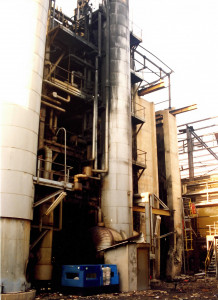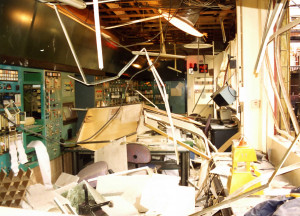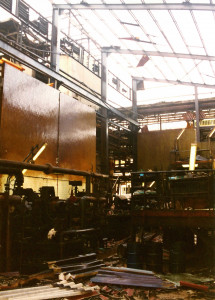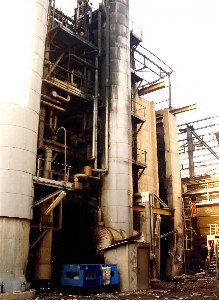An explosion and fire occurred at night inside a workshop dedicated to toluene di-amine (TDA) synthesis by means of hydrogenating dinitrotoluene (DNT) in the presence of Raney nickel; the workshop had been taken offline for scheduled maintenance. Internal fire-fighters had the blaze controlled in 35 min; 4 employees were hospitalised. The technician handling valves to wash the hydrogenation reactors with isopropanol sustained burns to 40%-50% of his body and died 15 days later. The workshop was destroyed, as evidenced by: a burst reactor; the bunker housing the workshop deformed by the blast wave combined with sprayed fragments; the reinforced concrete wall cracked open; bent rebar; and a damaged control room. Glass panes shattered over a 50-100 m radius; the distillation unit adjoining the bunker was also damaged, causing the isopropanol and TDA to leak out, thus exacerbating the fire outbreak. Buildings at the neighbouring industrial site 150 m away had their lightweight structures deformed. Extinction water was channelled to the plant’s emergency basin. The wind dispersed the gaseous pollutants released (CO2, CO, NOx, unburned organic matter). The environmental impact proved to be limited.
According to the investigation carried out, this explosion was caused by injecting pure dinitrotoluene into one of the reactors during washing via the same circuit used during production process start-up. Two valves placed in series feeding this line its DNT supply were in fact found partially open (10°) during the post-accident survey, potentially allowing 500 to 700 kg/hr of product to flow into the reactor. The heat release from hydrogenating a small quantity of DNT most likely triggered, through sudden heating of the reaction medium, the violent decomposition of the remaining DNT.
In order to reduce the probability such an accident recurs, measures were adopted to prevent the injection of pure dinitrotoluene into the reactor, namely: elimination of the DNT intake on the injection tank; addition of 2 automatic on/off valves on the DNT supply pipe at the mix tank; closure of the connection (using an automatic on/off valve) between the mix tank and the injection tank during the reactor washing phase; modification of washing procedures (transitioning from a discontinuous to continuous mode); and rearrangement of reactor layout to minimise the need for personnel to enter the bunker.
Download the detailed report in .pdf format (884 Kb)







